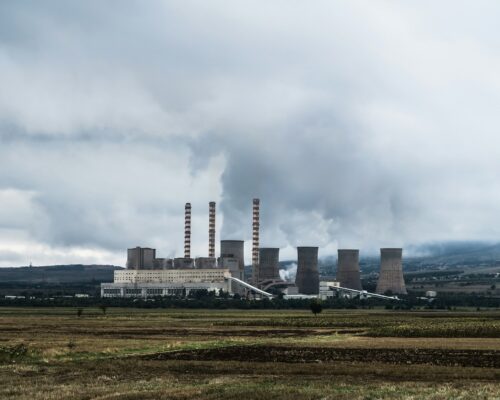Flood Risk In Asia
04 March 2024 – by Viktor Tachev Comments (0)
Scientists warn that Asian countries will face an increasing flood risk by 2050. This comes as no surprise to frontline communities, which have been experiencing extreme weather impacts first-hand for years. However, it only adds to their worries. The most affected communities say they have received limited assistance from authorities for dealing with recent climate disasters. Meanwhile, extreme weather impacts will only get more frequent and severe, meaning that governments should no longer brush off the calls for urgent and meaningful adaptation and mitigation efforts.
Scientists: Asia to Face the Most Significant Flood Risk
After analysing 146 past and present generations of climate models in joint research, scientists from universities in Australia and the UK have found that by 2100, rainfall changes will affect between 3-5 billion people. No continent will face such substantial rainfall changes as Asia. Moreover, of the 25 countries with the highest risk of extreme rainfall, 10 will be in Asia.
Over 70% of the models agree that areas home to over 2.7 billion in China and India will experience increased rainfall. Among the rest of the affected Asian countries are Bangladesh, Japan, Thailand, Malaysia, Cambodia, Vietnam and Indonesia.
In its 2023 Gross Domestic Climate Risk Dataset, the Cross Dependency Initiative (XDI), an expert group in physical climate risk, examined damage to the built environment from extreme weather and climate change impacts in over 2,600 locations worldwide. The analysis identified Asia as the region with the highest risk, with 114 of the top 200 provinces with the highest aggregated damage ratio by 2050 located there. The biggest risk is in East and Southeast Asia, with 29 of the top 200 provinces in China, another 20 in Japan and four in South Korea. Southeast Asia, notably Vietnam and Indonesia, holds 36 of the top 200 places in the ranking.
XDI’s findings align with the conclusions of another study by the World Bank, which states that 70% of the most flood-exposed people (1.24 billion) live in South and East Asia.
According to XDI’s models, between 1990 and 2050, East and Southeast Asia will experience the most significant increase in damage globally. The steepest escalation is expected post-2030. The two leading reasons are sea level rise and flooding risk.
Scientists’ Warnings Become Everyday Reality
Since the late 1970s, typhoons in the East and Southeast Asian regions have doubled their destructive power. The number of Category 4 and 5 storms has also doubled or tripled. According to the World Meteorological Organisation’s Assistant Secretary-General Dr. Wenjian Zhang, as a result of the increasingly intense tropical cyclones, we can expect stronger winds, heavier rainfall, higher waves, storm surges and coastal flooding.
Over the past two years, extreme floods due to heavy monsoon changes have been tormenting countries all across Asia, taking lives, destroying livelihoods and impacting economies.
Hwayoung Yoo, a farmer from Nonsan in South Korea, spoke about the worsening floods. “The water level reached to my waist. I had never been so desperate for my entire 53-year life,” she said. Yoo gave up city life eight years ago to start a farm on a 7,300 square-metre block of land in Korea’s countryside.
“Everything was flooded, and it took about a month to dry my fields and start planting again. But new crops and vegetables were damaged by diseases and insects I had never seen before,” she added.
Yoo grows various crops and vegetables, including rice, pumpkins, beans and peppers but added that farming is becoming difficult due to climate change. When asked about how she envisions the future, she said: “As climate change is worsening, I fear that I will have to deal with more disasters.”
Jeongyeong Kim, a farmer from Sangju in South Korea’s North Gyeongsang Province shares similar worries. “Things are different from the past, and we must deal with so many uncertainties.”
“It seems like we don’t have four distinct seasons anymore. The spring is getting shorter, while in the summer, it is becoming too hot, and we have too many heavy rainfalls,” Kim explains.
Suwarno, a 55-year-old builder from Manggihan, Demak in Indonesia who has lost his home due to tidal floods, says climate change’s impacts have worsened over time.
“The water level keeps rising. Tidal floods became frequent,” he said. “Seawater submerged our village. Currently, another one in Mondoliko has been isolated. Everything is submerged – roads, houses, public facilities, and mosques. There is no life there anymore,” said Suwarno.
Addressing the Increased Flood Risk Requires Adaptation and Mitigation Efforts
The latest scientific warnings, as well as communities’ everyday struggles, further highlight the need for Asian governments to prioritise immediate and meaningful adaptation and mitigation efforts. According to the IMF, meeting climate mitigation and adaptation needs in emerging and developing Asia requires an investment of at least USD 1.1 trillion annually. While current funding falls short by USD 800 billion, estimates reveal that governments can close the gap simply by introducing an effective fossil fuel subsidy reform.
Climate Change Mitigation
Climate scientists warn that the only way to avoid the worst scenarios in their projections is immediate and deep CO2 emissions reduction. Alternatively, this means substantially reducing planned fossil fuel capacity and an accelerated transition to clean energy sources.
However, currently, Asia is doing precisely the opposite. Despite the clean energy capacity additions over the past few years, Asia’s power sector emissions are rising. The reason is the heavy fossil fuel reliance, which is only going to increase in the short term.
According to Urgewald, Asia will be home to the most significant new coal-fired capacity additions. China accounts for two-thirds of the 516 GW of global capacity in the pipeline. The biggest increases for the remaining 39 countries with coal plans are India (72 GW), Indonesia (21 GW), Vietnam (14 GW) and Bangladesh (10 GW).
Furthermore, BankTrack’s January 2024 report reveals that major Japanese, Indian and Indonesian banks are still open to continue funding coal power projects.
Asia will also lead the global oil and gas expansion, accounting for 514 of the 783 GW in the upcoming project pipeline.
China is the undisputed leader, followed by developing Southeast Asian countries.
To avoid the worst impacts of climate change, Asian governments must abandon their fossil fuel expansion plans. While bearing the biggest responsibility to lead by example, Asia’s leading emitters, China and India, also have the most to gain from halting these plans. XDI’s study reveals that the two countries, alongside the US, will face the highest aggregated damage risk in 2050. This is an urgent wake-up call for the biggest polluters, who must take action.
The same goes for Southeast Asian countries, which are among the most exposed to climate change’s worst impacts. Investment mechanisms like the Just Energy Transition Partnerships for Indonesia and Vietnam are viable tools for helping developing Asia wean itself off fossil fuels’ environmental, energy security and economic risks and accelerate the transition to solar and wind. Developed nations, multilateral development banks and financing institutions also play a crucial role. Ensuring that a more significant part of the funding comes from grants, not loans, will give developing Asia more fiscal freedom and increase its ability to provide adequate adaptation, loss and damage financing to disaster-stricken areas.
Climate Change Adaptation
Broad-level climate change mitigation actions should go hand-in-hand with prioritising the needs of frontline communities and scaling up the adaptation capabilities of the most vulnerable regions.
Yoo, whose farm has been significantly affected by floods in South Korea, spoke about the lack of assistance from government authorities.” Yoo added: “It was my neighbours who helped me with restoration.”
Suwarno’s story indicates that the situation is quite similar in Indonesia as well. “There is always basic food assistance, but there has been no assistance from the government regarding relocation,” he notes.
His house is just one of the 125 affected by the tidal floods in his village. When asked how he expects the government to help and protect his community in the future, Suwarno says, “I would like to see tidal flooding addressed in my old neighbourhood. Perhaps, for example, by building a coastal belt so that tidal flooding doesn’t severely affect the coastal areas in Java.”
Acknowledging Suwarno’s call and protecting frontline communities with timely adaptation measures is critical, considering the threat coastal inundation and flood risk pose for many regions across Asia.
After conducting a satellite survey, a research team at the University of Rhode Island in the US found that 17 of the 20 fastest-sinking cities between 2015 and 2020 were in Asia.
Indonesia’s capital, Jakarta, sees a third of its territory being submerged by 2050. Furthermore, between 92 and 115 Indonesian islands are likely to be underwater by 2100 due to rising sea levels.
Sea levels in the Philippines have risen by between 5.7 mm and 7 mm per year in some areas, double the global average from 1951 to 2015. Greenpeace Asia notes that Metro Manila is sinking by 10 cm every year. Some studies even predict that coastal flooding events in Manila will occur 18 times more often in the next century, solely due to climate change.
Vietnam is the most at risk of coastal flooding in Southeast Asia. Big cities near highly flood-prone deltas, like Ho Chi Minh City and Hanoi, are especially vulnerable.
By 2030, 96% of Thailand’s capital, Bangkok, could be flooded, while 80% of Mumbai could end up underwater by 2050.
Worrying projections like these indicate the importance of taking timely measures to improve disaster preparedness and limit the damage risk for frontline communities’ homes and livelihoods. Without climate change action, millions of lives will be at risk, while Asia’s and ASEAN’s economies will shrink by 26.5% and 37.4% by 2048, respectively.
The Tools to Ensure Scientists’ Warnings Remain Just That Are There
“I don’t have a religion, but I still prayed for it to stop raining,” said Yoo when talking about the summer floods of 2023.
While the technology is there, and the economic, sustainability and social arguments all favour taking adequate and immediate mitigation and adaptation efforts, current government action continues to confirm that the interests of the fossil fuel industry prevail over the needs of its people. This approach must change.
“I believe the ultimate solution should be sought by all our society, including the government taking necessary action,” farmer Jeongyeong Kim says.
When asked about the future, the farmer adds: “Honestly, I don’t know what to do to cope with climate change. The biggest concern is that I’m losing hope that things will get better.”
Ensuring that the struggles of frontline communities become a thing of the past requires a government rethink and the application of adequate mitigation and adaptation measures for its people and industry.
by Viktor Tachev
Viktor has years of experience in financial markets and energy finance, working as a marketing consultant and content creator for leading institutions, NGOs, and tech startups. He is a regular contributor to knowledge hubs and magazines, tackling the latest trends in sustainability and green energy.
Read more







